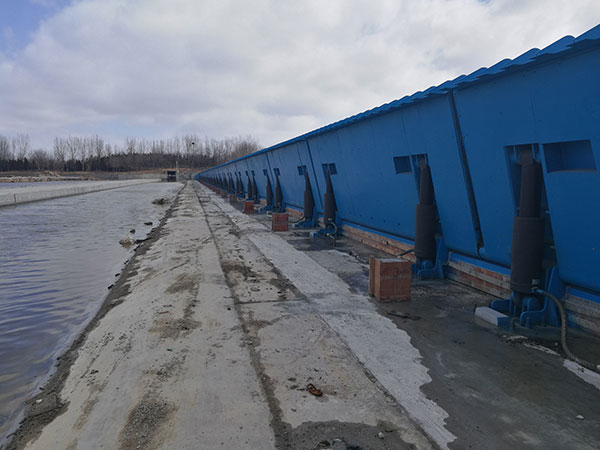
Hydraulic dam
Hydraulic lifting dams are low-head water-retaining structures, which are widely used in water conservancy irrigation, hydroelectric power generation, and urban beautification. Especially for the cascade development of urban rivers, it can form a wide water surface, increase the urban scenery belt, and easily form a waterfall landscape on the dam body, which can effectively improve the ecological and cultural environment and improve the social environment of the city.
Design features
♦The hydraulic lifting dam has a large span, simple structure, reliable support, and easy to construct;
♦ The hydraulic system of the hydraulic lifting dam is flexible in operation , It can be controlled by buoy switch to realize automatic operation and achieve unmanned management;
♦ The hydraulic lifting dam basically maintains the original river bed, which can discharge floods and accumulate sand, pebbles and floating objects upstream without blocking water. Compared with traditional sluices and similar rubber dams, it has large flow capacity and large discharge flow. It is especially suitable for rivers in areas with sandy, rocky, tree, bamboo and cold areas where rubber dams are not suitable for construction;
♦ hydraulic lifting dams have good durability. As long as the dam sector structure and hydraulic system are maintained normally, the engineering durability is longer than that of rubber dams;
♦ The hydraulic cylinders used in hydraulic dams are single-stage or multi-stage hydraulic cylinders, and the hydraulic cylinders bear more lateral force. Large, optimized in the guiding and sealing structure to improve the reliability of the hydraulic cylinder. |